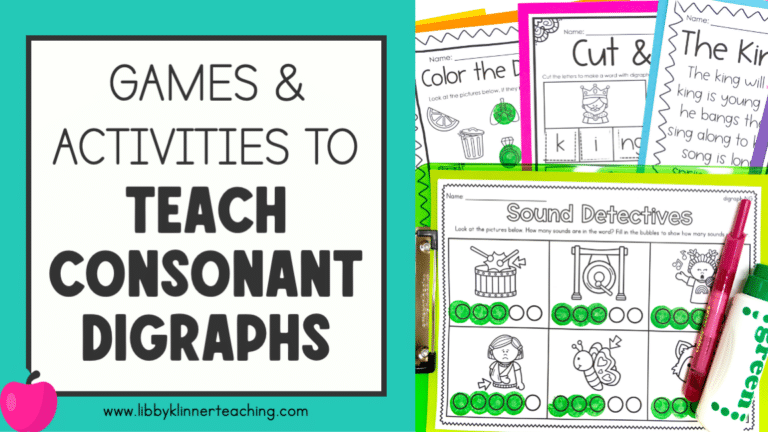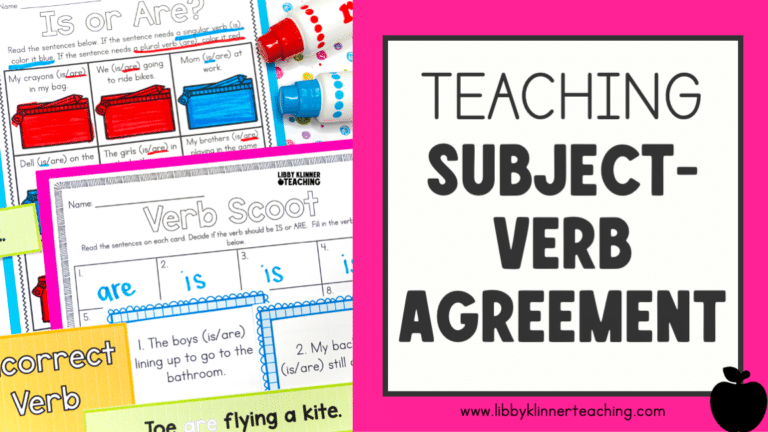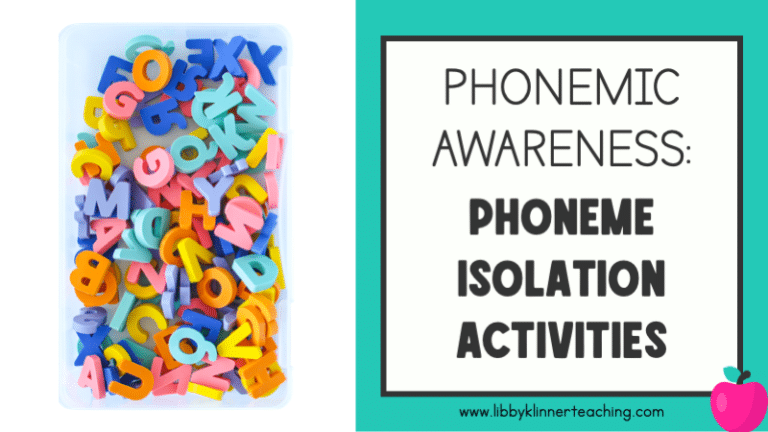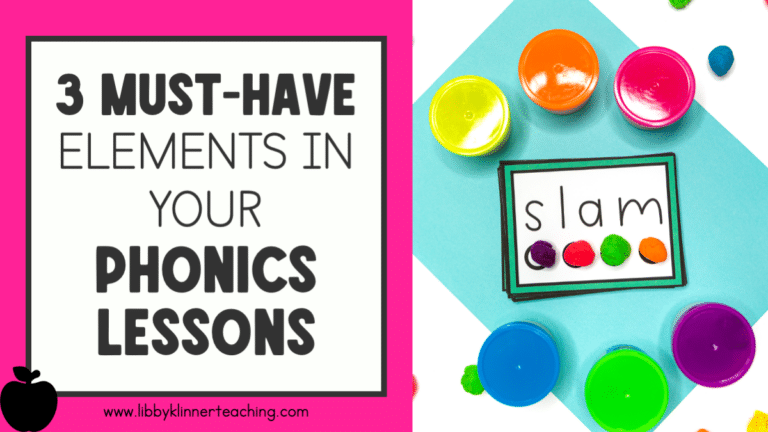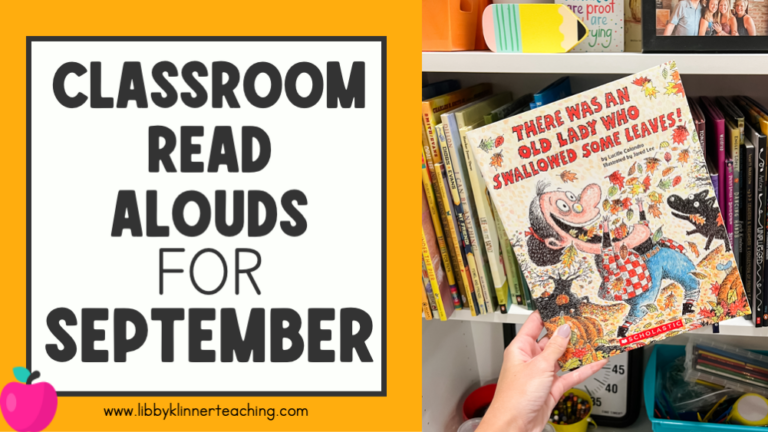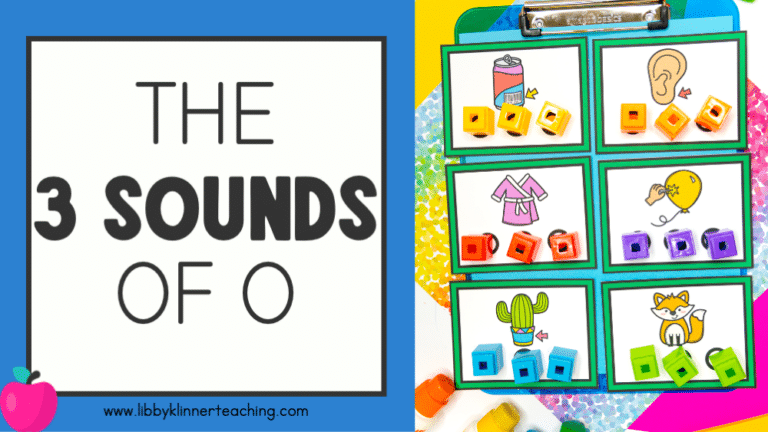Teaching Sight Words with the Science of Reading

Are your students struggling to learn sight words? Sight words are incredibly tricky, especially for students that may have low working memory or other learning challenges. Learn how to teach sight words using the Science of Reading and make them make more sense for your students!
What does the Science of Reading have to do with sight words?
For a very long time teachers thought that sight words are words that have to be memorized and known by ‘sight,’ hence the name. Still today many teachers believe this. However, it’s not completely true.
Many sight words, although not all, do follow phonics rules. The problem is that young students often have not yet learned these rules when they begin learning these sight words.
For example, the word have ends with an e but has a short a sound. This word is confusing to students because they typically learn about the magic e/silent e. They learn that a magic e creates a long vowel sound. However, have does follow a spelling rule! It is not spelled hav because words in English do not end in the letters i, u, v, or j. This is a great example of a word that is not spelled like it sounds but still follows a spelling rule. Young students often haven’t learned this rule when they are exposed to the sight word have.
Science of Reading: The Basics
The Science of Reading is a body of research based on scientific knowledge and evidence-based studies that gives us information about how we learn to read. It provides evidence supported by science to show how to teach children to read.
One of the core tenets in the Science of Reading is to systemically teach phonics, rather than the memorization of words. If a child knows letter-sound relationships, that knowledge will carry them much further than memorizing words. The Science of Reading has taught us that we need to explicitly teach decoding, beginning with phonological awareness (the ability to hear and manipulate phonemes – the individual sounds in words), followed by phonics and word recognition, before moving onto fluency, vocabulary, and comprehension.

The Science of Reading and Sight Words
So you might ask, ‘how do I teach students to sound out sight words?’ You can teach students which sounds in the word ‘follow the rules’ and say the expected sound. You can then point out the sound within the word that does not follow a rule. Really Great Reading calls sight words Heart Words and teaches students the part of the word that they ‘have to know by heart.’
Here’s how you can use the Science of Reading to teach sight words!
Begin by identifying sounds within each sight word. For example, stop has four sounds.

Say the word ‘stop’ and ask students to repeat it back to you. Then count the sounds in the word together by finger tapping them. Ask how many sounds are in the word. Stop has 4 sounds, so you draw 4 lines for each sound or use sound boxes, as shown below.

With your students help, add each grapheme (letter) that matches the sound onto the line or inside the box. Students can do this along with you!
Although the word stop may seem like an easy word, this is very effective because students are hearing and remembering the letter/sounds in the word.
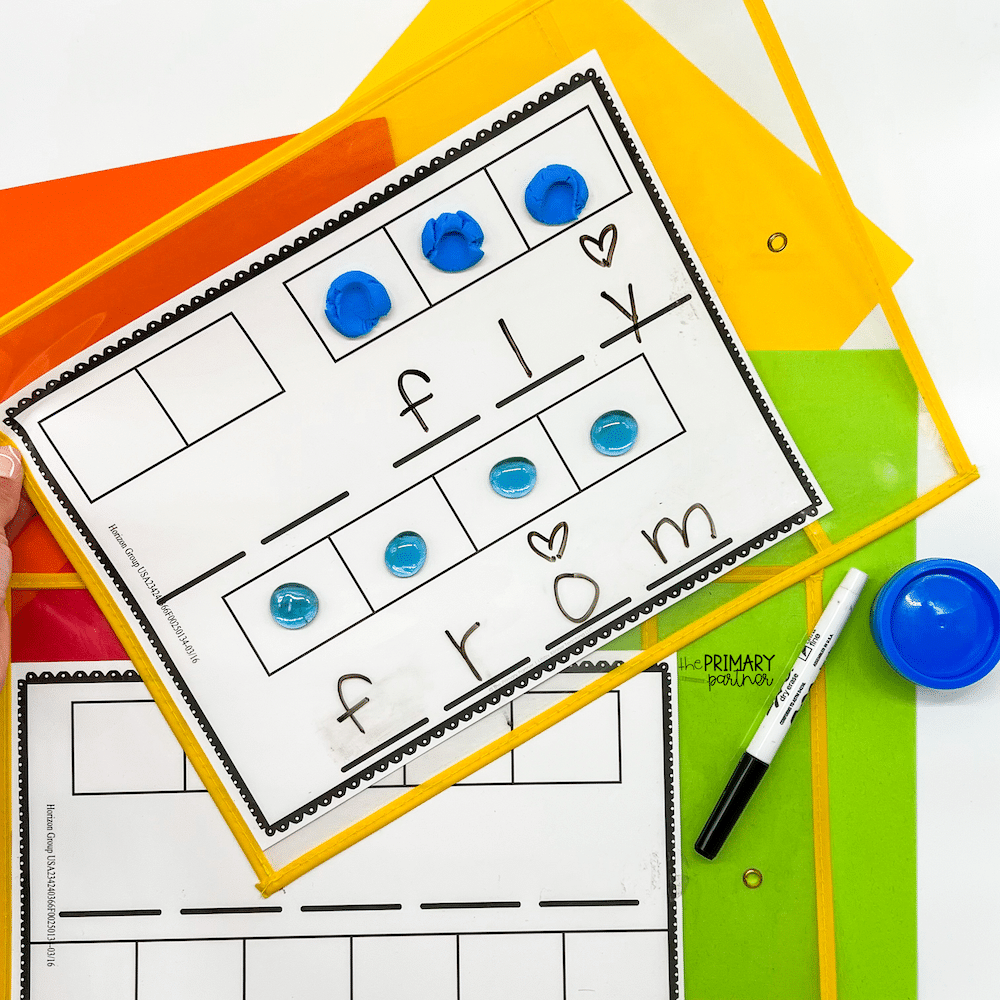
Using a hands-on activity to help students sound out the word, like play-dough dots, counters, etc. will help students remember how to spell the sounds in the sight word.
Now you may be thinking, how do I do this with a word that doesn’t ‘follow the rules’?

This is where you can point out which part of the word isn’t spelled the way it sounds, either by using a heart or by providing a phonetic spelling guide, like the one below.
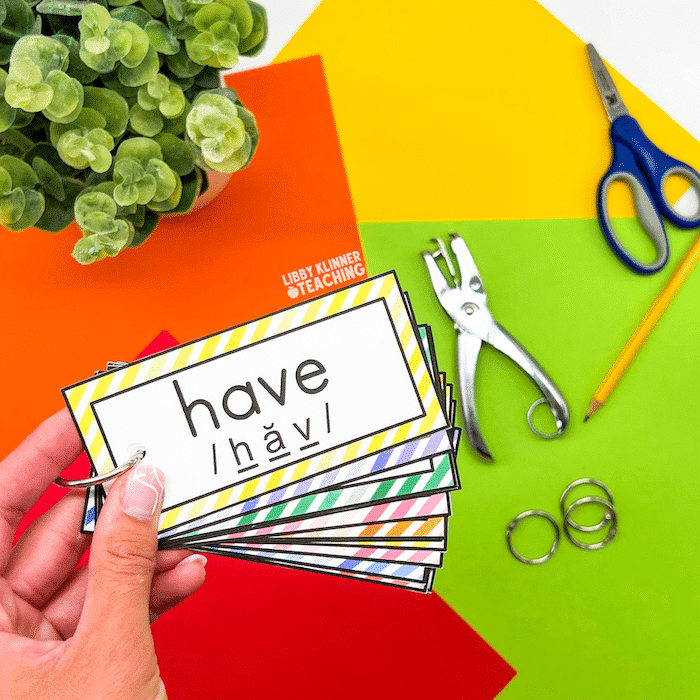
Teach students that a macron (−) above a vowel represents a long vowel sound and a breve (∪) represents a short vowel sound. Then they can sound the sight words using the phonetic guide provided!
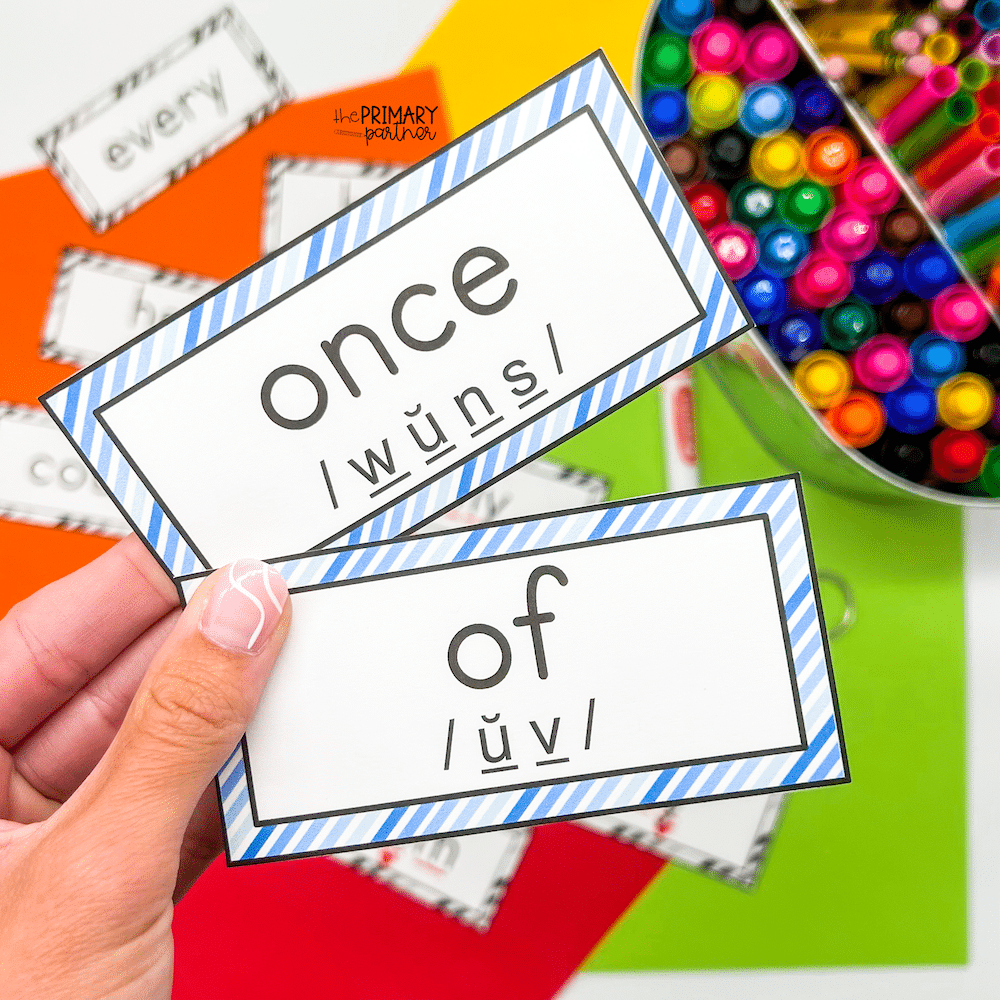
For words that require multiple hearts, like the words above, phonetic spelling guides are particularly helpful.
I hope this opens new possibilities in the world of sight words! If you’re looking for more information on the Science of Reading and sight words, click the links below.
Really Great Reading Heart Words
Reading Rockets – Science of Reading
Institute for Multi-Sensory Education
If you’d like to purchase the sight word cards with phonetic spelling guides, click the button below!

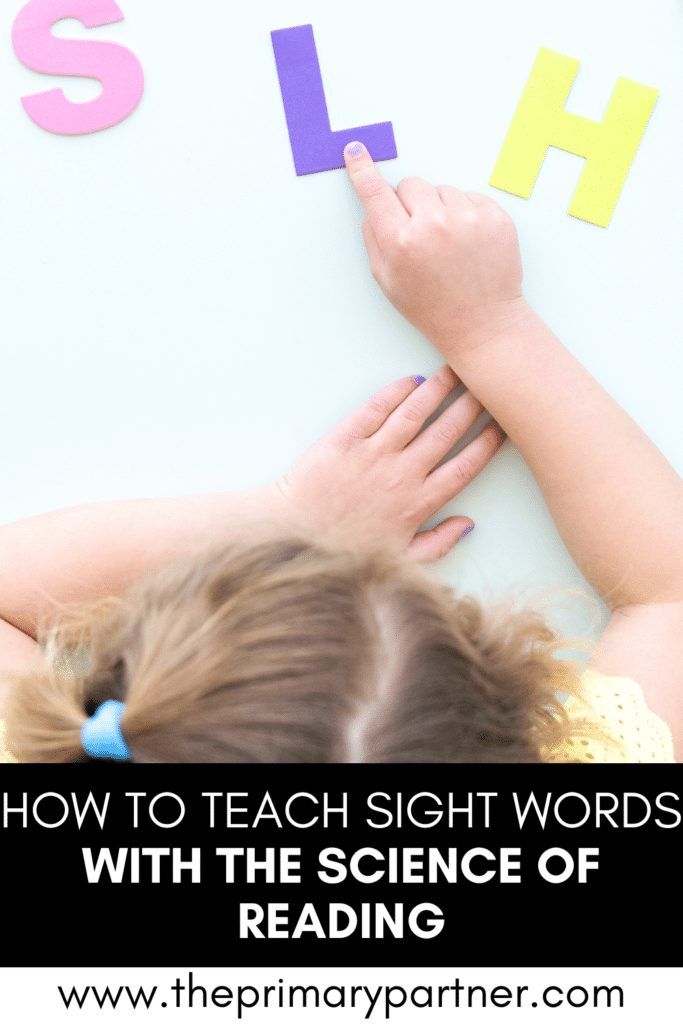

Hi, I’m Libby!
I’m so happy you’re here! I love all things first grade – the curriculum, the content, and the sweet kiddos. I’m passionate about helping K-2 teachers save time in the classroom with fresh ideas and fun, engaging resources.

